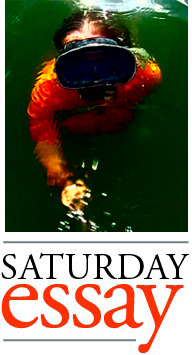The Musician as Inventor
 The recent passing of Eddie Van Halen reminded me of a favorite topic: the musician as inventor. I refer to the invention of objects, techniques, and concepts. It’s invention in the service of an art form. For instance, musical instruments are invented, then shaped with further inventions which make additional modifications possible. Musicians have always been inventors. Here are some of my favorite examples.
The recent passing of Eddie Van Halen reminded me of a favorite topic: the musician as inventor. I refer to the invention of objects, techniques, and concepts. It’s invention in the service of an art form. For instance, musical instruments are invented, then shaped with further inventions which make additional modifications possible. Musicians have always been inventors. Here are some of my favorite examples.
Rock and Roll Itself
The invention of rock music, with its pedigree of blues, gospel, and so on, is these days commonly attributed to Chuck Berry in the early 1950s. Berry produced the musical mutant that would conquer the world when he combined rhythm and blues with country and western guitar licks, then packaged it with guitar solos and other showmanship. His signature duck walk may be considered a lasting invention, still in use by Angus Young of AC/DC who credits Berry for, well, everything. Berry was influenced by Sister Loretta Tharpe, whose 1944 song, “Strange Things Happening Every Day,” is sometimes considered the first rock record.
The Electric Guitar
Arguably one of the greatest inventions of all time, the electric guitar has many predecessors. In 1910, violins and banjos were being amplified on the fly with telephone transmitters. Hobbyists tinkered through the 1920s. Jazz guitarists were early adopters of homemade electrics. The Big Band era made guitar amplification a necessity and drove the issue. Nothing was commercially available until the 1932 “Frying Pan” guitar, designed by George Beauchamp and Paul Barth. Beauchamp and Adolph Rickenbacker invented the pickups necessary to complete it. Let me know when a greater invention comes along. The list of greatest inventions goes like this: Indoor plumbing, toilet paper, the electric guitar, rock and roll, birth control, the internet.
Distortion
Guitar distortion comes from a long line of influences. Once the guitar electrified, many musicians wanted a “raw” sound like the early blues. To replicate this “low-down, dirty” sound, 1940s bluesmen put lap-guitar pickups into their guitars to modify their tone. In the 1950s, “increasing gain beyond its intended levels” became a goal in itself because it sounded great. In 1951, guitarist Willie Kizart purposefully used an amp with an accidentally damaged vacuum tube in the song “Rocket 88” (another contender for “first rock song”). Through the 1950s, guitarists intentionally dislodged their vacuum tubes to get the sound they wanted. Link Ray poked holes in his amp’s speakers with a pencil in 1958. In 1964, Dave Davies of the Kinks slashed his amp with a razor blade to get the distortion he wanted on “You Really Got Me.” The sound had become so popular it drove the invention of effects pedals.
Eddie Van Halen
Not until his death did I hear about Van Halen’s patents. Turns out he was a tinkerer and irrepressible modifier of guitars. For instance he made an early “flying V” guitar by taking a chainsaw to one. He is said to have destroyed many good guitars while taking them apart to push them in new directions. Not all of his experiments ended well for him, like the time he almost electrocuted himself taking apart an amp to tweak the sound. But after many years he was an expert in guitar modification and construction. In an interview he claimed guitar pioneer Les Paul told him, “You know, Eddie, it’s only you, me, and Leo Fender who really know how to build a guitar.” His friendship with Paul was a deep one and their bond over guitars was its backbone. In the above interview he tells a great invention story of supergluing sandpaper to a guitar pick so he could hold it better. When Paul called him to ask what he was up to, Van Halen said, “Nothing much, I’m just gluing sandpaper to a guitar pick.” Paul responded, “You’re kidding – I’m doing the same thing right now!” Great minds …
Van Halen held three guitar-related patents by the time of his death. One of those patents involved a brace on the back of the guitar which allowed it to be held like a lap guitar, facilitating the “tapping” style of playing which he helped pioneer.
Tapping/The Chapman Stick
Van Halen is associated with the playing style called “tapping” where notes are played by tapping the strings on the neck of the guitar. He did not invent the style but he expanded it in pursuit of playing faster. He described it as “like having a sixth finger on your left hand.” Exactly who invented it is unclear; this is typical of many inventions. Tapping has been used in string instruments for some time. The violinist-guitarist Paganini (d. 1840) may have been the first on both instruments. Tapping techniques were known on the banjo and the ukulele in the early 20th Century, and from there the technique made it to jazz. Emmet Chapman liked the technique so much, he not only developed new techniques for it, but he invented one of the first tap-only instruments, the Chapman Stick, essentially a modified guitar neck without a body. Not many people play it but it has some notable proponents, among them King Crimson’s Tony Levin.
Competing claims have been made as to who first introduced tapping to rock guitar. Harvey Mandell of Canned Heat is said to have used the technique at the Whisky-a-Go-Go as early as 1968. Steve Hackett of Genesis claims to have developed it in 1971. So somewhere in there, the technique took off. Van Halen saw Jimmy Page do it on stage in 1971, and immediately thought of ways to expand it. Van Halen composed entire songs of tapping such as “Eruption,” which popularized the technique to modern audiences while using classical scales (head explodes). It also launched an army of imitators, who he derided as “typewriter players.”
Kate Bush
Singer-songwriter-composer-dancer-performer Kate Bush invented the first hands-free microphone headset for use in music. Wireless microphones had existed since 1945 or so, but they were still handheld. NASA made wireless headsets for astronauts in 1969. But the music world didn’t have them until Bush’s 1979 tour. She needed her hands free for her intensely choreographed dance routines, and so she rigged a wireless mic to a headset made of coat hangers. Soon Peter Gabriel and Madonna were using them and now they are ubiquitous in the pop world.
That One Guy
Mike Silverman, who tours as a one-man band under the name “That One Guy” invented his signature instruments, the “magic pipe,” the “magic boot,” and the “magic saw.” These are modified and machined everyday objects with embedded electronics and pickups. The magic pipe also incorporates orchestral bass strings (Silverman is a classically trained double bass player). The instrument’s strings are struck with a drumstick, and the pickups are struck with the free hand, making it a string-percussion-electronic hybrid. Originally, he was going to hire craftspeople to build the instruments, but the cost was prohibitive so he learned to do it himself.
Laurie Anderson
Performance artist Laurie Anderson is hard to characterize, having always made experimental music with surreal lyrics, sounds, performances, and techniques. Peter Gabriel, one of rock’s more experimental creators, collaborated with her and encouraged her to make her music more commercial. That phase didn’t last long. She married the famously experimental Lou Reed, collaborating with him too. Anderson was an early adopter of voice filter technology. She also invented musical instruments like the “talking stick” which replicates and synthesizes sounds in various ways. My favorite invention of hers is her tape-bow violin, which replaced the horse hair of the bow with a segment of audio tape, and the violin had a magnetic tape head in the bridge. This allowed her to manipulate the audio sample on the tape. She later adapted this into a digital instrument. When I saw her in the 1980s she had put pickups in her suit, making drum sounds as she danced, the “drum dance.” She had also turned an ’80s keyboard-pattern necktie into an actual keyboard.
Robot Rickshaw
No Duluth-based essay about inventor musicians would be complete without mentioning Duluth’s Troy Rogers, who performs as Robot Rickshaw. A conductor of musical robots of his own invention, the robots used to be wheeled around on a cart, but Troy has now incorporated them into an Iron Man suit that has only caught fire a couple times. Troy is part of a community of one-man-band roboticists/makers which runs the gamut from Onyx Ashanti to Captured! By Robots (who played Duluth’s Pizza Luce in 2009 sponsored by the Richardson Brothers, just saying).
Another Duluth inventor-musician who shall not go unmentioned is, of course, Tim Kaiser.
This list is not comprehensive! I would be happy to discuss your favorite musical inventions in the comments.
I have also written about music in my “Indy Rock Guitar Goddess She-roes” series here and here.
All my essay series here.
Recommended Links:
Leave a Comment
Only registered members can post a comment , Login / Register Here














7 Comments
Paul Lundgren
about 4 years agoJim Richardson (aka Lake Superior Aquaman)
about 4 years agoDave Sorensen
about 4 years agoJim Richardson (aka Lake Superior Aquaman)
about 4 years agoJim Richardson (aka Lake Superior Aquaman)
about 4 years agoBrian Barber
about 4 years agoJim Richardson (aka Lake Superior Aquaman)
about 4 years ago